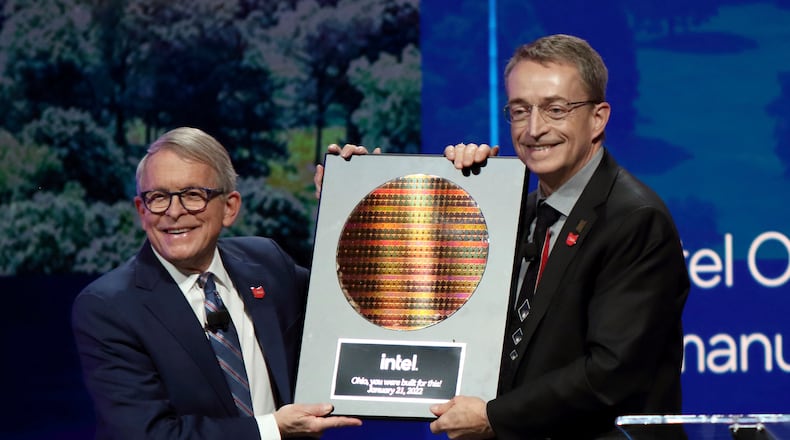“We have to invest in our people today if we want to invent the technology we need in the future,” said Christy Pambianchi, Intel executive vice president and chief people officer.
The company will accept proposals from technical centers, educators, academic-based researchers and others to develop curriculum, faculty training, lab equipment, research and student internships.
Sinclair Community College officials said they don’t have a lot of specifics yet, but they are positioned to participate.
“As the Intel project progresses, Sinclair will work with JobsOhio and higher education partners to identify specific needs and expand and/or introduce course offerings to meet those needs,” said Steve Johnson, Sinclair president and CEO.”
Sinclair currently offers multiple degrees and certificates in computer science, information technology, advanced manufacturing, automation and control with robotics, and industrial maintenance technology among other fields.
“Our region has long, proud reputation as a manufacturing community that continues today,” Johnson said. “Intel’s investment may result in growth for current advanced manufacturing, technology, and logistics businesses in the Dayton region and spark the creation of companies and jobs to support Intel’s efforts.”
The other half of Intel’s investment will support higher education institutions across the country, including minority-serving colleges and universities. The $50 million from the National Science Foundation will be used to fund semiconductor researchers and educators across the U.S.
Pambianchi and Erin Gianchandi, assistant director of the NSF technology innovation and partnerships directorate, both highlighted the importance of collaborating with trade schools and community colleges in helping close the technology skill gap in the U.S.
Gianchandi said the institutions are untapped treasure troves of talent that can provide training for a variety of jobs for the future.
“We believe that investing in education is necessary to ensure that we have the right talent,” Pambianchi said.
Johnson said Sinclair’s mission, tracing back to founder David A. Sinclair, is to “find the need and endeavor to meet it.” He said Sinclair would continue to align its programs and courses with the community and business needs in the Dayton region and beyond.
Thursday’s announcement came a few months after Intel released plans to invest $20 billion in two New Albany semiconductor production sites.
On top of the 7,000 construction jobs the investment is expected to bring to the state, Pambianchi said it will also bring 3,000 Intel positions with roles that will utilize workers whose background ranges from two-year associate’s degrees to PhDs.
About the Author
